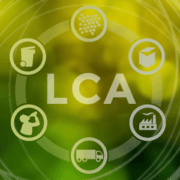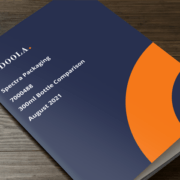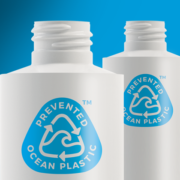One of the most significant decisions consumers can make is regarding their packaging choices, particularly between PET plastic, glass, and aluminium. While glass and aluminium have merits, PET stands out in numerous ways, offering environmental and practical benefits.
Here, we examine PET’s environmental advantage and its other practical benefits over comparative materials.
One of the most compelling reasons to choose PET is its impressive reduction in greenhouse gas emissions. When Spectra commissioned an independent Life Cycle Analysis in 2021, some of the evidence was startling.
For example, did you know that PET production emits 74% fewer greenhouse gases than glass and aluminium? This substantial difference contributes to a smaller carbon footprint, helping combat climate change more effectively.
In addition to reducing carbon emissions, PET manufacture consumes 53% less water than glass. In an era where water scarcity is a growing concern, opting for PET can significantly impact water conservation efforts across industries.
Another major consideration is packaging waste, which is a significant environmental challenge.
However, PET generates 80% less solid waste than glass, a key factor in keeping our landfills less crowded and our environment cleaner.
PET is also known for its high recycling potential. Over 1.5 million tons of PET are recycled globally each year, making it one of the most recycled plastics.
This efficient recycling process facilitates a circular economy, where resources are continually reused rather than discarded.
With a global warming potential that is up to 70% lower than that of glass and aluminium, PET production also has far less impact on the atmosphere, contributing positively to climate stability.
So, that covers the environmental benefits of PET over glass and aluminium, but what about the more practical advantages?
While the environmental benefits are strong, PET’s practical advantages can make a real difference in everyday use. There are several reasons why PET is a superior choice over its glass and aluminium counterparts.
One of PET’s standout features is its resistance to breakage. PET is designed to withstand impacts without breaking, unlike glass, which shatters easily, or aluminium, which can dent. This quality makes it a safer option for households, especially where children or high-traffic areas are concerned and keeps the product looking better for longer.
Equally, PET is significantly lighter than both glass and aluminium. This not only makes it more convenient to carry, but it also contributes to reduced transportation costs and emissions. Lighter materials mean lower fuel consumption, decreasing overall carbon emissions associated with distribution.
PET also boasts superior barrier properties that protect contents from oxygen, moisture, and UV light. These properties are particularly beneficial for beverages and perishables, extending shelf life and maintaining quality without excessive preservatives.
From production to transportation, PET can provide substantial cost savings. Its lightweight nature translates to lower shipping costs, while its efficient manufacturing process reduces production expenses. These savings often translate into lower consumer prices, making PET an economically savvy choice.
PET’s versatility also makes it suitable for a wide range of products – from bottles and containers to films and fabrics. This adaptability is crucial in today’s diverse market, allowing manufacturers to meet varying consumer needs while focusing on sustainability.
Beyond its sustainability and practicality, PET also delivers a premium outcome that can rival glass and aluminium in quality.
The clarity of PET provides an attractive appearance like that of glass, ensuring that products look visually appealing on retail shelves. In many instances, brands using PET find they can maintain an upscale image while benefiting from the advantages of a lightweight and durable material.
Additionally, PET can be formulated to provide enhanced aesthetics, including various finishes and colours, allowing brands to differentiate their products in competitive markets. This adaptability ensures that consumers get a high-quality experience without compromising on sustainability. Additionally, colouring can be achieved without the protracted lead times and high on-costs associated with colouring glass.
With the pressing need to address environmental challenges, choosing PET over glass and aluminium is a proactive step toward a more sustainable future. Its substantial environmental benefits and practical advantages, such as safety, lightweight properties, cost-effectiveness, and premium appearance, position PET as the preferred packaging material.






